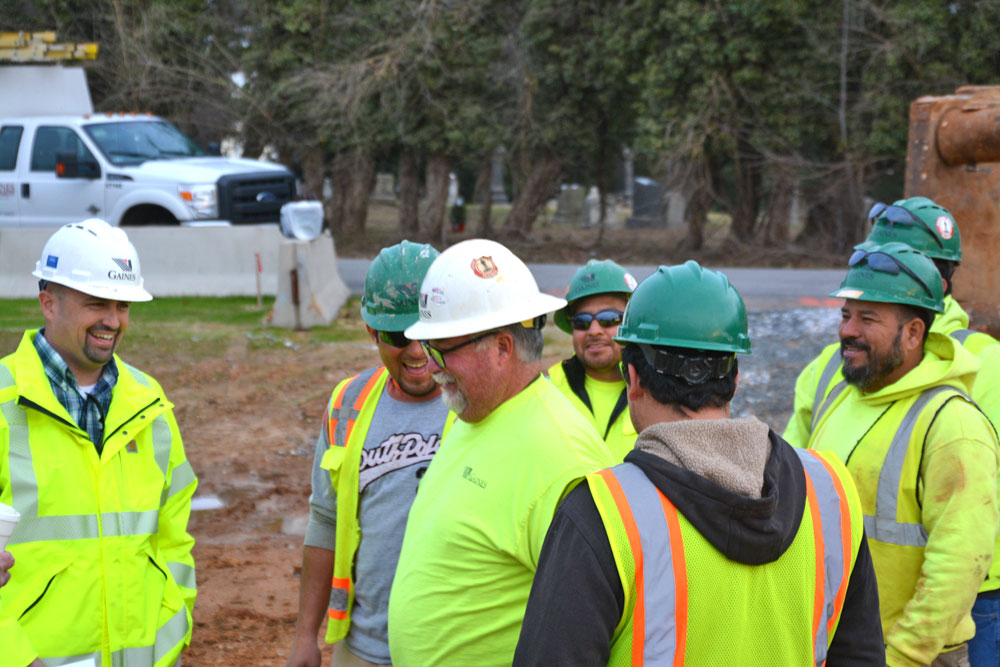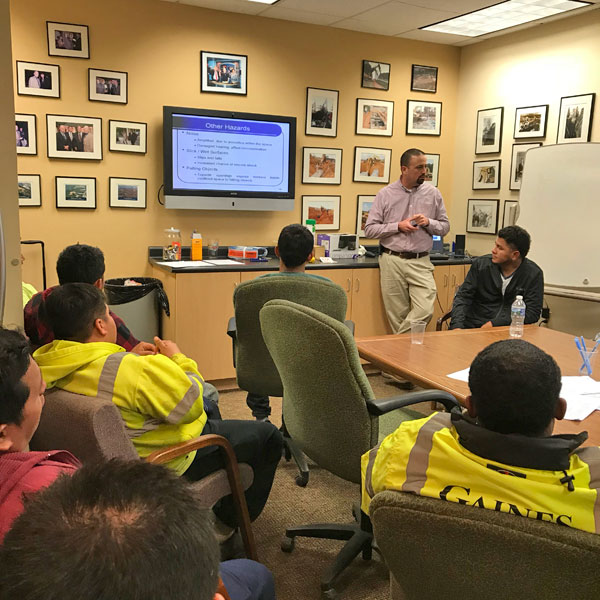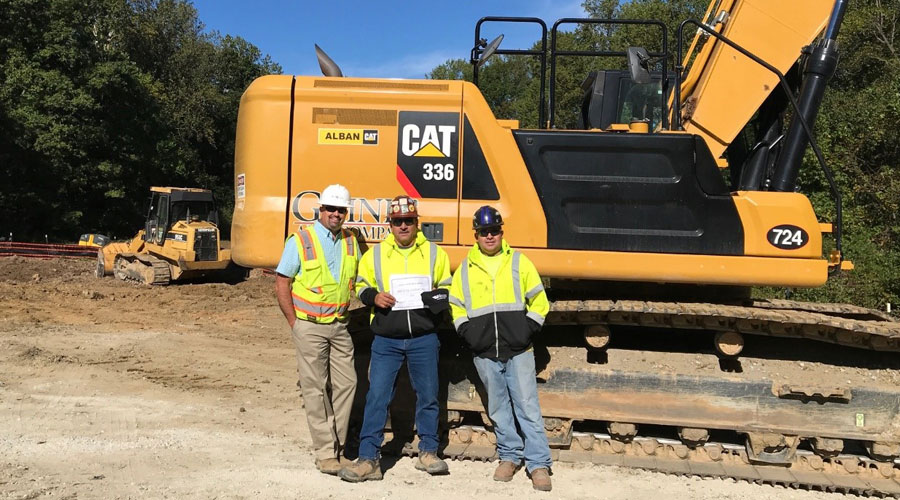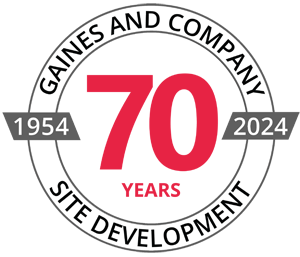Communication Reinforces Safety Culture
Gaines and Company crews build a level of trust with each other that breaks down communication barriers.
Thanks to an array of organizations committed to studying workplace safety practices, the construction industry has a variety of safety statistics that convey a snapshot of its safety performance. Those numbers are useful and teach us a lot, but they should not always be our primary focus. What matters is that injuries are still occurring. Until workplace injuries are nonexistent, companies need to continually examine and enhancing their workplace safety cultures. This includes a leading element of all safety cultures: jobsite communication.
Gaines and Company workers are on jobsites throughout Maryland, Washington D.C., Delaware, and North Carolina every day performing turnkey site development services, including pre-construction services, full-service site development, underground utilities, grading and excavating, storm water management, road work, and federal installations. Our industry-leading reputation is a result of over sixty years of safety, reliability, and quality. We were recognized on Engineering News Record (ENR)’s Top 600 Specialty Contractor list, and have received several awards. What is our secret to success?
“Our safety culture is not preached to our employees. Instead, it is felt throughout the organization. It is initiated and championed from leadership, but accomplished through active participation from the entire organization,” said Safety Manager Dominic Pope.
“Safety needs to be continually practiced, though. Just because we have a strong safety culture does not mean we check it off our list and leave it how it is. We continually enhance our safety culture through lessons learned, employee participation, and effective communication.”
Gaines and Company places a strong emphasis on jobsite communication. Examples of safety communication on a jobsite include routine meetings, pre-job briefs, shift turnover, Stop Work Authority, lock out/tag out, and safety signs, cones, and barriers. These common tactics are not always as easy as they sound, though.
“These tactics are simple on paper, but they prove to get complex in practice,” said Dominic.
Communication barriers common to construction sites include:
- Language: Not everyone on Gaines and Company’s workforce identifies English as their first language. Therefore, we often print safety messages in multiple languages.
- Message Recipient: Safety messages are worthless if they are not getting to the correct audience at the right time. Assess messages to ensure workers are receiving appropriate messages.
- Two-Way Communication: Employees must be empowered and encouraged to voice their opinions and concerns.
- Retaliation: Workers must have confidence that their ideas and concerns will not result in punishment or retaliation. This is achieved with confidence in leadership and supervisors, as well as an open-minded workforce.
- Clear Understanding: Construction sites are loud. Just because a message was said, does not mean it was heard. Just because it was heard, does not mean it was understood. Find a communication system at your jobsite that is effective, including identifying supervisors or mentors that workers trust to engage in safe conversations.
- Confidence in Crew: Crews should have confidence in each other, especially their foremen. When approached with a safety concern, foremen should communicate their follow-through so the crew is ensured the concern was addressed, which encourages them to continue communicating concerns.
- Over Communication: Do not over communicate. Too much communication causes noise, which results in missing important messages.
- Communication Gaps: Identify communication failures to continually enhance safety programs.
Leadership routinely recognizes workers who exceedingly enhance the company’s safety culture with the Safety Excellence Achievement Award. This recognition promotes two-way communication between leadership and the workforce.
“It’s all about a team mentality,” said Dominic. “We not only encourage, but require, our employees to speak up. We want them to be actively engaged in our safety culture so it continually remains on their minds throughout the work day, keeping not only themselves, but everyone on the jobsite safe.”
Communication is an integral aspect of a successful safety culture. As with other elements of safety, it must be continually practiced, assessed, and enhanced to ensure its effectiveness for everyone throughout the jobsite.









